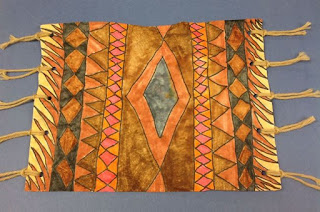In each of our classes, we attempt to meet the needs of every child. From special needs to gifted, ELL to non-verbal, as well as all other abilities and qualities, we do our best to accommodate our students and help meet their learning styles. We are trained in our educational degrees how to create accommodations for your students, especially with an individualized education program (IEPs).
I would like to focus on working with students with special needs. My own daughter has special needs. When she was at 18 months of age, we began Early Intervention therapy and after testing, it was concluded that she was developmentally delayed in speech and on the autism spectrum. We pretty much knew what the answer would be and we still love our daughter just the same, but we know we’ll have a journey ahead with her development. Some of you may have similar stories, but being a parent of a special needs child opens your eyes to a unique set of challenges and joys.
You will have many students in your art classes with unique personalities, and I would like to provide some advice as both an educator and a parent of special needs children.
1. Be patient. Having students with any special need will present a learning experience within your classroom, and some days will be tougher than others. You may need to repeat directions again, or work one on one if a paraprofessional is not available. There may be times when a student will shut down and if that happens, give them the time they need to calm down and come back on track. Giving students their space helps the child refocus and continue on their work.
2. Keep up to date on your students’ IEPs. Throughout the school year, meetings will be taking place to determine what services will be recommended to meet the students’ needs and depending on the development over time, students’ IEPs can change. Stay in communication with the special education teachers within your districts to keep up to date with any changes. You can also request to attend meetings. As a visual teacher, you can give a unique perspective on their development, especially with fine motor and social behavior in your classes.
3. Get to know the families. It really makes a parent’s day when any teacher takes an extra step in communication. From my end, I appreciate all of the notes and communication we receive from our daughter’s teachers and therapists. Imagine how your parents would feel receiving a note or phone call from the art teacher! Open communication helps to bridge connections with everyone involved and gives an extra resource of support.
4. Do your best to provide the accommodations needed. There are many ways to work with your students, from where to seat them in class, to providing materials that adapt with their needs. In communication with special education teachers, we acquired scissors that help with fine motor development, special seating for students who need support at the tables, and technology settings for the Chromebooks, tablets and laptops used.
5. Ask questions. It is very good to keep open communication for all parties involved with a child’s development. Sometimes, a situation may arise that stumps you (for example, a student responds to work less than an average day). Attempt to communicate with the student, paraprofessional, or teacher involved to see if there was any recent changes that could have altered the child’s behavior. One method our daughter’s teacher uses is communication slips, which helps provide information for handling the transitions of the day. In knowing how our daughter started off her day, the teacher can provide answers for the therapists and other educators involved working with her. If your student appears to be reacting beyond what you’re familiar with, ask questions.
6. Keep an open mind. As a parent of a special needs child, I am constantly worried about my daughter. When we’re in public, I don’t know if or when she will have a tantrum. We learned that people will have opinions and throw comments at you without knowing our situation, and we admit as much as we try to keep an open mind and shrug it off, it does hurt. Imagine how the parents of your students feel. We are all working together to provide for all students involved. We will have days that are more challenging than others.
On the bright side, there will be successes as well! But I do need to stress that you need to keep an open mind. Do not let your frustrations cloud your ability to work with your students. The best thing you can do is provide the love and support they need to develop and grow. After all, you are part of the team who helps your students become who they are meant to be.








